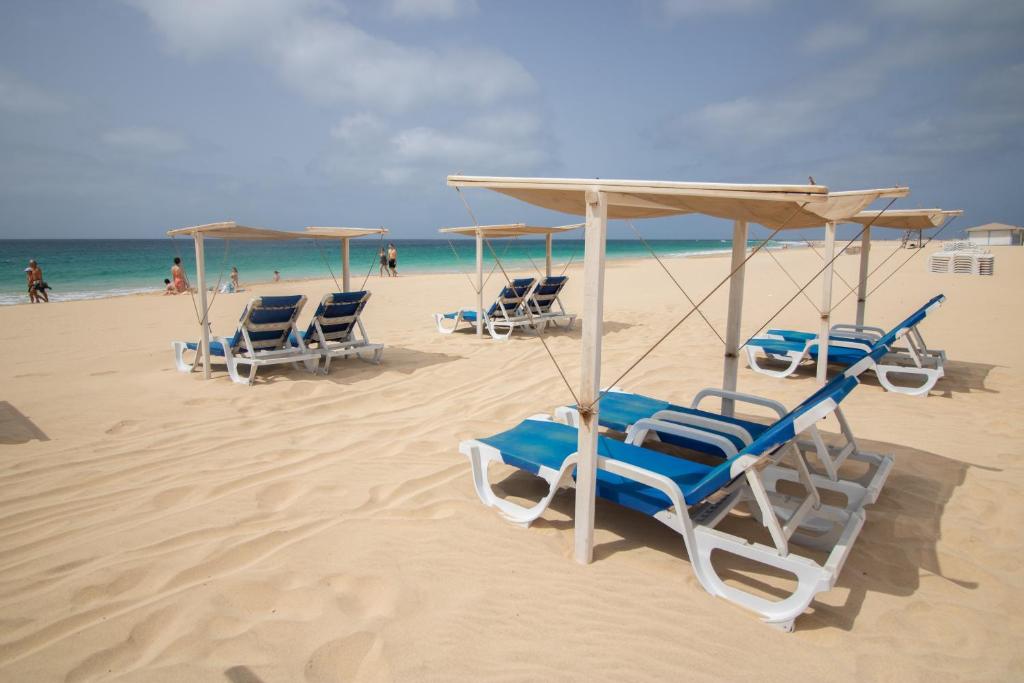You’re in for a real treat in Boa Vista! The weather’s ideal, with temperatures ranging from a comfy 20°C in February to a toasty 30°C in August. The driest month is April, with 30 sunny days and hardly any rain. But don’t worry, the wettest time is September, with a whopping 24 inches of rain – perfect for appreciating the lush greenery. The sea temperature’s a balmy 27°C in August too, making it perfect for splashing around. And you’ll be pleased to hear there’s consistent sunshine year-round, ideal for outdoor adventures. Ready to start planning your trip? Keep reading to dive deeper into Boa Vista’s dynamic climate.
Key Takeaways
-
- Boa Vista experiences a tropical climate, with average temperatures ranging from 20°C to 30°C throughout the year.
- The warmest month is September with an average temperature of 29°C, while February is the coolest with a high of 24°C.
- Rainfall is highly variable, with April being the driest month with minimal rainfall and September being the wettest with 24 inches of rain.
- The drier months are from January to July, while the wetter season is from August to October.
- Boa Vista enjoys abundant sunshine, with April being the sunniest month, offering 30 sunny days and 10 hours of daily sunshine.
Average Temperature and Rainfall
Throughout the year, the average temperature in Boa Vista ranges from a mild 20°C (68°F) to a balmy 30°C (86°F). The warmest month is September, when temperatures soar to a toasty 29°C (84°F).
But don’t worry, you’ll still enjoy plenty of sunshine – the driest month, April, offers an average of 30 sunny days! Rainfall is minimal during the dry season from January to July, but things really pick up in September, the wettest month, with a whopping 24 inches (610 mm) of the wet stuff.
February, the coolest month, still manages a comfortable high of 24°C (75°F). These monthly averages are essential for planning your Boa Vista adventures, whether it’s farming, sightseeing, or simply soaking up the sun.
Seasonal Temperature Patterns
Boa Vista’s seasonal temperature patterns are marked by a gradual rise from the cooler months to the warmer ones.
You’ll start off in February with an average temperature of 20°C, which is perfect for outdoor activities. As the months go by, the mercury creeps up, reaching a toasty 30°C in August.
But the real scorcher is September, where the average temperature hits a sizzling 29°C.
Don’t worry, though – the temperature variations are quite manageable, so you can still enjoy the great outdoors. Just be sure to pack your sunscreen and stay hydrated during the drier months from January to July before the wetter season kicks in from August to October.
Rainfall Distribution Throughout the Year
Rainfall in Boa Vista tapers off considerably from January to July, with April being the driest month, registering a mere 0 mm.
But don’t worry, you’ll bask in sunshine during those months. The wettest time is September, when the city averages a whopping 24 inches of rain, so be prepared for potential travel delays.
August and October also pack a punch, with 12 and 23 inches respectively. Shift into the wetter season with moderate rainfall in February and March – 11 and 6 inches on average.
Whether you’re chasing the sun or dodging downpours, Boa Vista’s weather offers a dynamic experience year-round.
Sunshine Hours and Cloudiness
Boa Vista enjoys consistent sunshine throughout the year, with April being the sunniest month, boasting 30 sunny days and an average of 10 hours of sunshine per day.
You’ll bask in ample daylight, with sunshine hours ranging from 8 to 10 daily, perfect for outdoor adventures and beach days.
Even during the rainy season, the cloud cover’s minimal, though September might see a bit more cloudiness.
The high temperatures and low rainfall make Boa Vista a sunny oasis year-round.
Sunshine recorders confirm the town’s ideal conditions for solar energy and tourism.
Sea Temperature Variations
In addition to the abundant sunshine, the tropical climate of Boa Vista is characterized by comforting sea temperatures that cater to year-round water activities. The average sea temperature ranges from a invigorating 23°C (73°F) in the cooler months to a balmy 27°C (81°F) during the warmer season, so you can splash around without a care. Temperatures typically peak in August, aligning with the hottest air temps – perfect for those who love sun-soaked beach days. These seasonal variations influence local weather patterns and marine life, making it a prime spot for fishing and eco-tourism. Continuous monitoring of sea temps is essential for understanding climate change and protecting the vibrant coastal ecosystem.
| Month | Average Sea Temperature (°C/°F) |
|---|---|
| January | 23°C / 73°F |
| April | 24°C / 75°F |
| July | 26°C / 79°F |
| August | 27°C / 81°F |
| December | 24°C / 75°F |
Weather’s Impact on Local Activities
Thriving in Boa Vista’s tropical climate, locals and visitors alike enthusiastically embrace the diverse range of outdoor activities on offer year-round.
With average temperatures ranging from a comfortable 20°C in January to a balmy 30°C in August, the dry months are ideal for immersing yourself in the region’s natural wonders.
April, in particular, boasts 30 sunny days and minimal rainfall, making it the perfect time for beach outings and water sports.
Even during the rainy season’s peak in September, the consistent 9-10 hours of daily sunshine support year-round outdoor events and tourism.
And with the sea temperature rising to a invigorating 27°C in August, you’ll be tempted to dive right in.
Travel Planning Considerations
When planning a trip to Boa Vista, it’s crucial to take into account the region’s tropical climate and seasonal weather patterns.
The best months to visit are January through April, when average high temperatures range from a comfy 20°C to 25°C and rainfall is scarce.
Avoid September, the wettest month with downpours and toasty 29°C highs.
April offers the sunniest skies, perfect for beach fun, while May boasts comfortable temps and minimal 9mm of rain, ideal for outdoor adventures.
Understanding the dry seasons from January to July and October to December can help you make the most of your Boa Vista experience.
Climate Data Resources
Climate data resources for Boa Vista provide extensive historical weather information, including average temperatures and rainfall patterns spanning from 1990 to 2020.
Monthly precipitation and sunshine graphs let you visualize trends and understand seasonal variations. Detailed climate data includes average highs and lows, so you can assess temperature extremes throughout the year.
Resources also highlight the average number of rainy days per month, essential for water management and agricultural planning.
Plus, access to weather forecasts and newsletters keeps you informed about current conditions and helps with effective trip planning.
With all this data at your fingertips, you’ll be well-prepared to make the most of your time in Boa Vista.
Frequently Asked Questions
Does It Rain in Boa Vista Cape Verde?
Yes, it does rain in Boa Vista, Cape Verde. The rainy season peaks from August to October, impacting local flora and tourist activities, though the overall climate is dry with consistent sunshine year-round, perfect for cultural festivals and seasonal outdoor pursuits.
What Is the Rainiest Month in Cape Verde?
The rainiest month in Cape Verde is September, with a staggering 24 inches of average rainfall – a statistic that can greatly impact tourism, local agriculture, and outdoor activities during the rainy season.
What Is the Best Month to Visit Cape Verde?
The best time to visit Cape Verde is June through August when you’ll enjoy warm temperatures, minimal rainfall, and the chance to immerse yourself in the nation’s vibrant culture, cuisine, and beaches. Embrace the freedom to explore this enchanting archipelago.
When Not to Go to Cape Verde?
You’d be crazy to visit Cape Verde during September! The torrential rain and scorching heat will ruin any chance of enjoying outdoor activities or cultural experiences. Steer clear unless you love fighting tourist crowds and risking your health.


Comment (0)